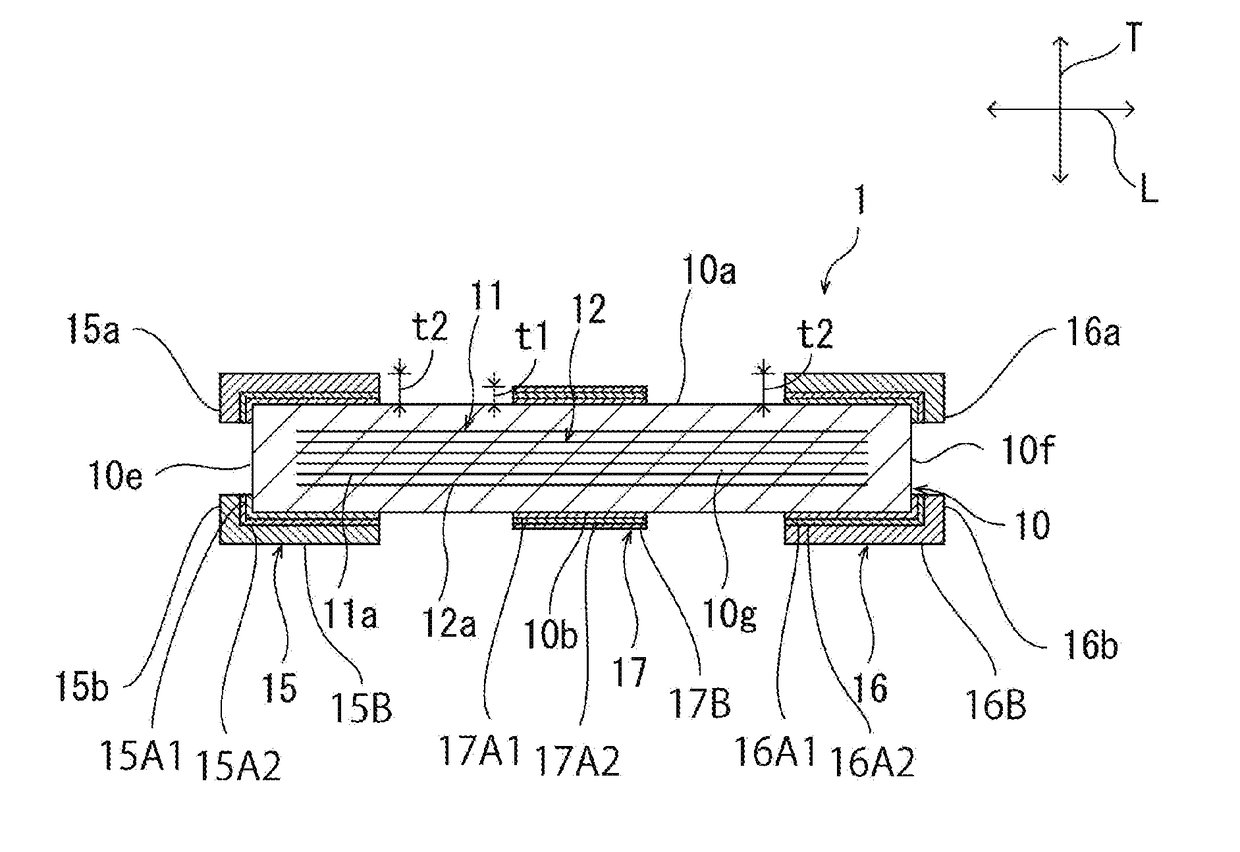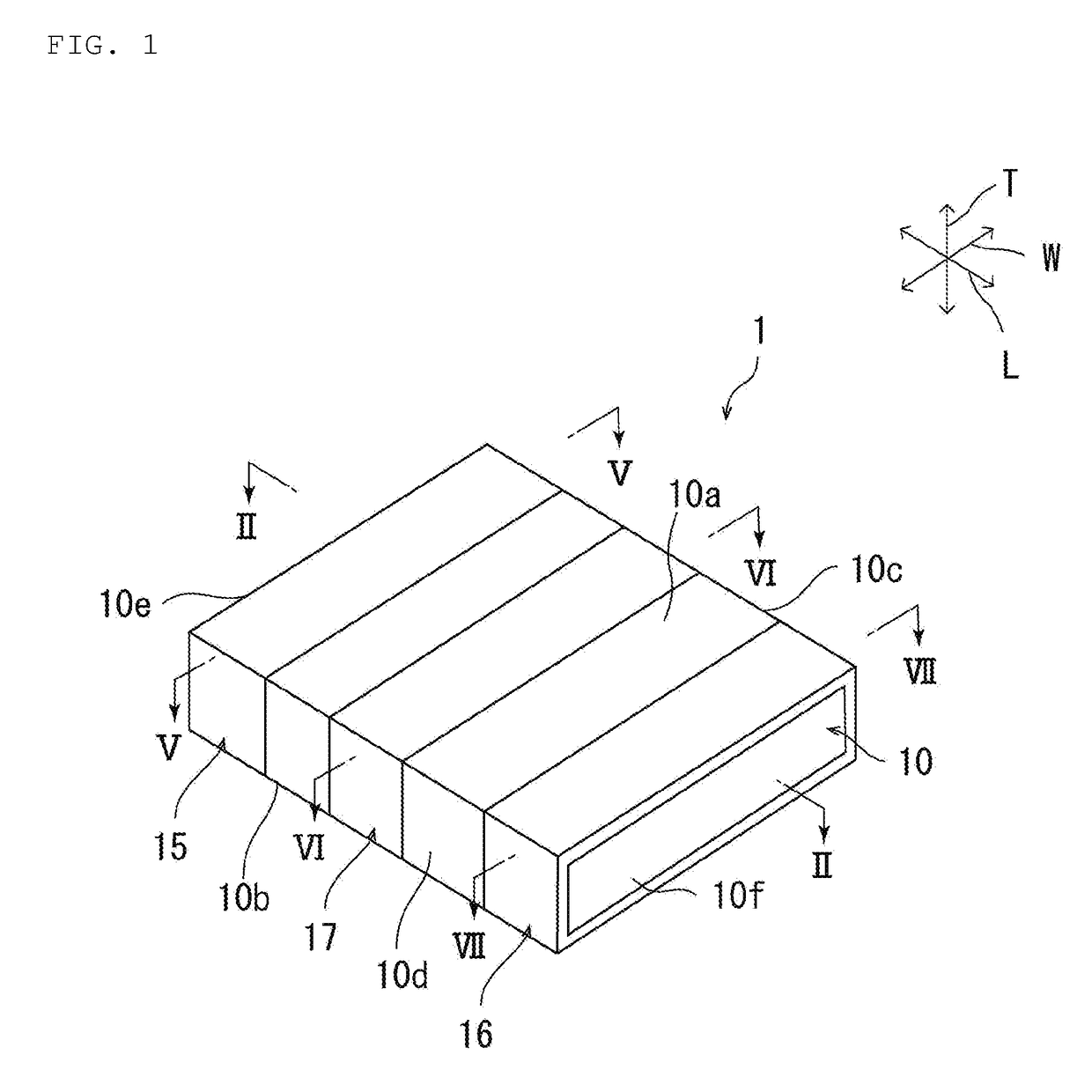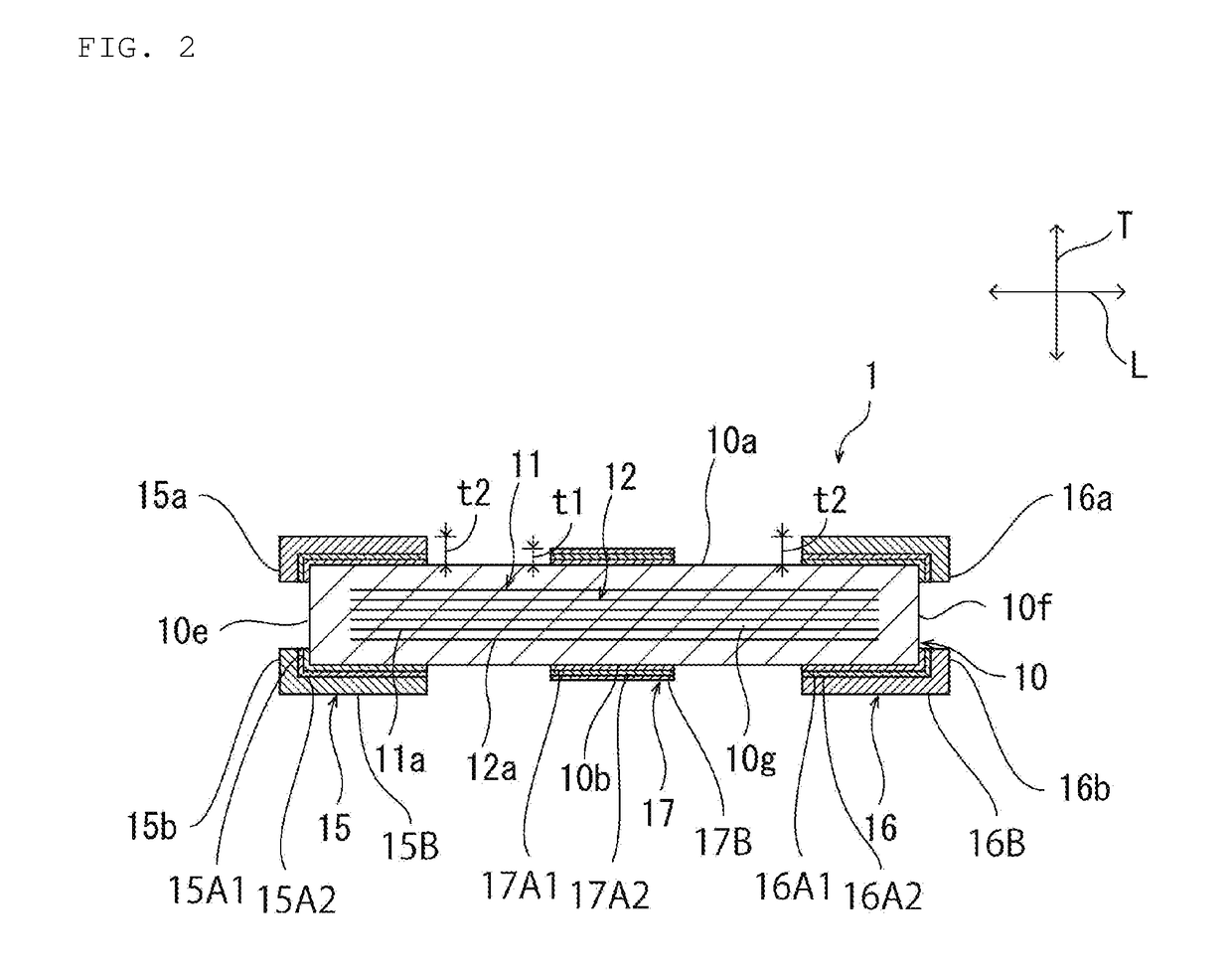Ceramic capacitor
a ceramic capacitor and capacitor technology, applied in the field of ceramic capacitors, can solve the problems of not being suitable for being embedded in a substrate, multi-terminal capacitors, and difficult to suitably embed multi-terminal capacitors, and achieve the effect of low esl
- Summary
- Abstract
- Description
- Claims
- Application Information
AI Technical Summary
Benefits of technology
Problems solved by technology
Method used
Image
Examples
second preferred embodiment
[0106]FIG. 10 and FIG. 11 are each a schematic cross-sectional view of a capacitor according to a second preferred embodiment of the present invention. In the first preferred embodiment, an example has been described in which the first external electrode 15 includes the first portion 15a, the second portion 15b, the third portion 15c and the fourth portion 15d, and the second external electrode 16 includes the fifth portion 16a, the sixth portion 16b, the seventh portion 16c and the eighth portion 16d. However, the present invention is not limited to this configuration.
[0107]As with the ceramic capacitor 1a shown in FIG. 10 and FIG. 11, the first to third external electrodes 15 to 17 do not have to have the first portion to the eighth portion 15a to 15d, 16a to 16d. Specifically, in the ceramic capacitor 1a, the first external electrode 15 is not disposed on a ridge which the first principal surface 10a defines with the first end surface 10e, on a ridge which the second principal su...
example 1
[0109]1000 pieces of capacitors having the substantially same constitution as in the ceramic capacitor 1 of the first preferred embodiment were prepared under the following conditions using the manufacturing method described in the first preferred embodiment.
Conditions:
[0110]Dimension of a ceramic capacitor (standard dimension): L×W×T=1.000 mm×0.600 mm×0.220 mm
[0111]Thickness of a capacitor main body: 200 μm
[0112]Ceramic material: BaTi2O3
[0113]Capacitance: 1 μF
[0114]Rated voltage: 6.3V
[0115]Sputtering electrode film: NiCr film, NiCu film (two layer structure)
[0116]Thickness of a NiCr film: 150 nm
[0117]Thickness of a NiCu film: 150 nm
[0118]Plated layer: one Cu plated layer
[0119]Thickness of a plated layer: 10 μm
experimental example
[0127]A plurality of capacitors in which their constitutions were substantially the same as that of the ceramic capacitor 1 of the first preferred embodiment and the thicknesses of the sputtering electrode films are thicknesses shown in Table 2, were prepared as samples using the manufacturing method described in the first preferred embodiment, and flatness of the external electrode, adhesion between the sputtering electrode film and the capacitor main body, and chip of the external electrode were evaluated. In addition, sputtering conditions were as follows.
Sputtering Conditions
[0128]Sputtering electrode film: laminated body of a NiCr film and a NiCu film
[0129]Apparatus: batch type sputtering apparatus
[0130]Ar gas flow rate: 0.8 cc / min
[0131]Pressure in film forming chamber: 0.33 Pa
Measurement Method of Thickness of Sputtering Electrode Film
[0132]A side surface of each of the ceramic capacitors prepared in Experiment Examples was polished until a width dimension of the ceramic capac...
PUM
 Login to View More
Login to View More Abstract
Description
Claims
Application Information
 Login to View More
Login to View More - R&D
- Intellectual Property
- Life Sciences
- Materials
- Tech Scout
- Unparalleled Data Quality
- Higher Quality Content
- 60% Fewer Hallucinations
Browse by: Latest US Patents, China's latest patents, Technical Efficacy Thesaurus, Application Domain, Technology Topic, Popular Technical Reports.
© 2025 PatSnap. All rights reserved.Legal|Privacy policy|Modern Slavery Act Transparency Statement|Sitemap|About US| Contact US: help@patsnap.com



